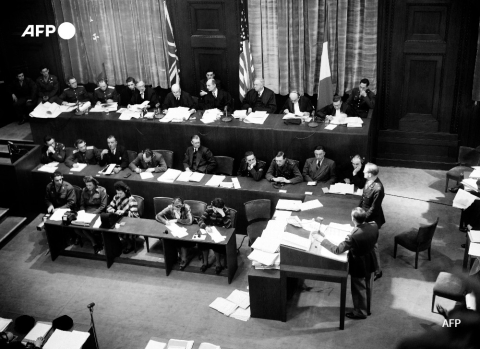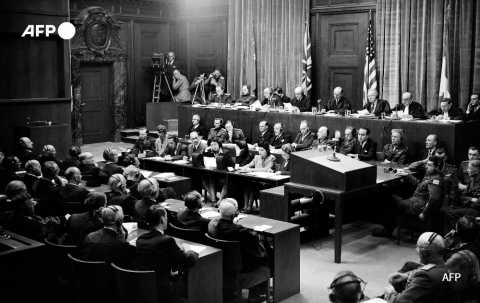The Nuremberg trials, from indictment to verdict

The post World War II Nuremberg trials which opened on November 20, 1946 involved a complex legal framework that provided the foundations for a system of universal justice.
Here is a summary:
- The indictment -
On October 8, 1945, the bill of indictment for the trial of the main 24 Nazi war criminals, is made public.
The indictment is drawn up by the four powers running the military trial -- Britain, France, the Soviet Union and the United States.
It accuses Nazi chiefs of having, over 25 years, prepared for world domination and, based on the theory of "racial supremacy", of having violated international laws and unleashed global war, killing and torturing millions of people.
The 30,000-word indictment is divided into three chapters:
- 1 : The accused have prepared a war of aggression, thus violating international treaties and accords, during the years preceding May 8, 1945.
- 2 : Between September 1, 1939 and May 8, 1945 the accused committed warcrimes in Germany and in all countries and territories occupied by the Wehrmacht, as well as in Austria, Czechoslovakia, Italy and on the high seas.
- 3 : Before May 8, 1945, the accused have committed attacks including murder and persecution in Germany and elsewhere, of those they suspect of being hostile to the Nazis.
The indictment describes the role played by each of the accused as well as that played by Nazi organisations with which they were affiliated.
Nazi organisations such as the Gestapo and the SS are also charged with warcrimes.
The first accused mentioned by name is Hermann Goering, cited as instigator of the system of concentration camps. He is followed by Robert Ley and Julius Streicher, who propagated the theory of the "master race".
The indictment underscores the "liquidation" of the Jews undertaken in many cities in Europe, and says that of 9.6 million who lived before the war in the countries occupied by the Nazis, an estimated 5.7 million have been killed, most of them systematically massacred by the Nazis.
The most direct charges are contained in a document drawn up by the Soviet Union which states that 1.5 million people were exterminated at the Madjanek concentration camp in Poland and about four million at Auschwitz.
In the region of Lvov, in modern day Ukraine, the Germans killed around 700.000 Soviet citizens, and another 200,000 in the Ganov camp.
The last part of the document deals with the pillaging of the occupied territories, which allegedly left millions of people starving to death.
- The verdict -

On September 30 and October 1, 1946, ten months after the trial opened, the court hands down its judgement.
Sentenced to death are Hermann Goering, who commits suicide in his cell on the eve of the execution, Joachim von Ribbentrop, Ernst Kaltenbrunner, Alfred Rosenberg, Hans Frank, Wilhelm Frick, Julius Streicher, Fritz Sauckel, Alfred Jodl, Arthur Seyss-Inquart, Wilhelm Keitel and Martin Bormann, judged in his absence. Unbeknown to the court, Bormann had in fact already died on May 1, 1945.
The executions take place on October 16. After being photographed the bodies are cremated and the ashes scattered in a tributary of the Isar river to prevent the creation of a pilgrimage site.
Those sentenced to life in prison are Rudolf Hess, who is found hanged in his cell in 1987, Walther Funk, who is freed on health grounds in 1957 and Erich Raeder, freed on health grounds in 1955.
Other defendants receive sentences of 20, 15 and 10 years in prison, and three -- Hans Fritzsche, Franz von Papen and Hjalmar Schacht -- are acquitted.
Three corps of Nazi party leadership -- the Gestapo, the SS and the SD are condemned as criminal organisations.
